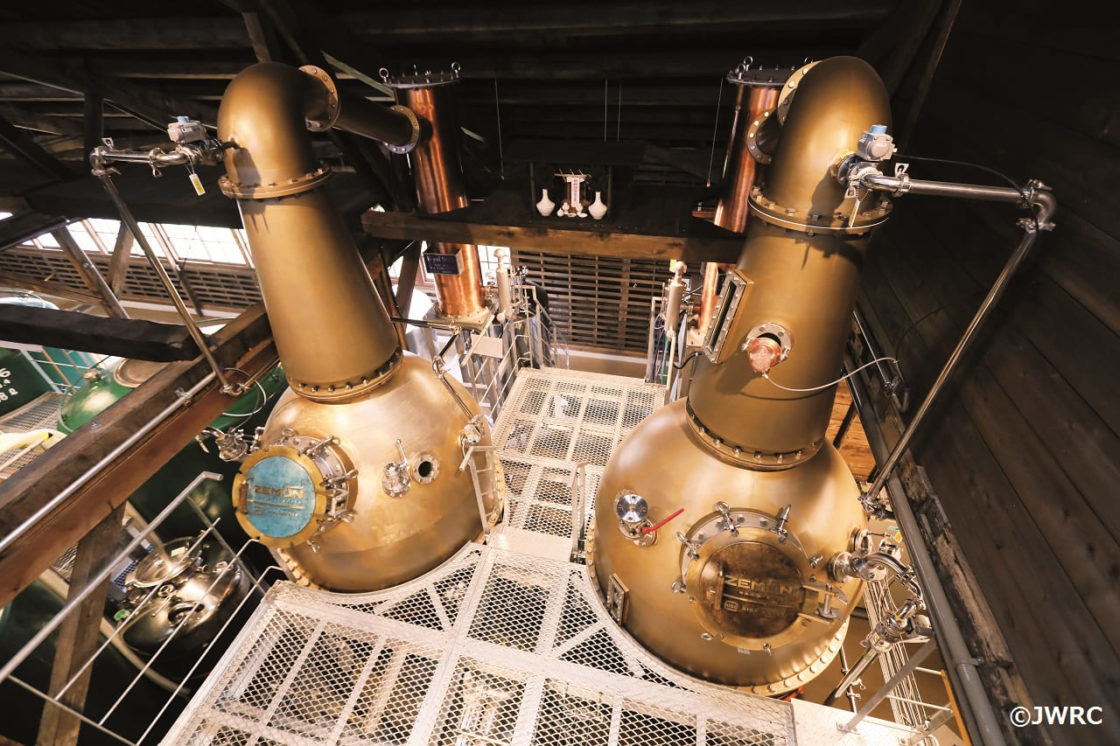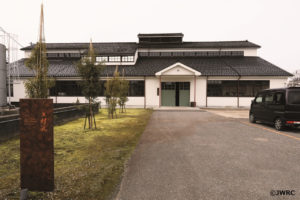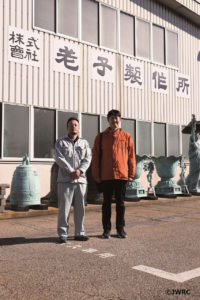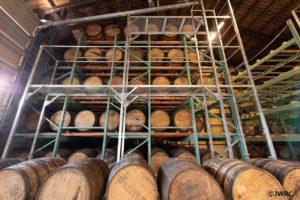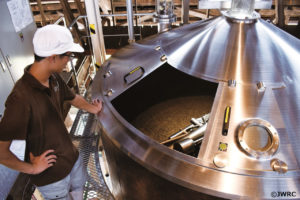Wakatsuru Shuzo was founded in 1862. Famous for “Sunshine Whisky,” the distillery was revamped in 2017 to begin making genuine Japanese whisky. They’ve been surprising the industry with revolutionary ideas ever since. What’s next?
Header image: The still is named ZEMON after the founder of Oigo Works Co., Jiemon Oigo. The right is the wash still and left is the spirit still. Since they both used the same cast, they are the same size and shape. They are made of a copper alloy consisting of 8% tin.
Text: Whisky Galore Editors
Images: Mamoru Tsuchiya, Hiroshi Shibuya
Translation: Whiskey Richard
This article originally appeared in Japanese in Whisky Galore Vol.25 / April 2021.
The Saburomaru Distillery has made some amazing strides since its renovation in July 2017. The most recent that comes to mind is ZEMON, the world’s first cast pot still, introduced in June 2019. Saburomaru’s Takahiko Inagaki jointly developed the still in conjunction with Oigo Works Co. in Takaoka, and it was cast, using techniques adapted from the creation of cast temple bells. It was patented in June 2020, and has won several awards including the highest level Minister of Economy, Trade and Industry Award from The Materials Process Technology Center Awards.The revolutionary pot still taps into Japan’s traditional craftsmanship, and is the subject from much attention domestically and abroad. A new, improved version was prototyped at the end of 2020, and further improvements that allow customization of the volume and lyne arm angle are also slated.
On the production side, a 6000 liter wooden washback was added last year. It’s made of Canadian Douglas fir. After an initial fermentation in the standard enamel tank, the final 24 hours of fermentation happen in the wooden washback. This allows for a more stable lactic acid fermentation. “Eventually our own original lactic acid bacteria will take, giving us a flavor specific to Saburomaru,” says a hopeful Inagaki-san. And last year they started using malt dried with Islay peat, something they wanted to do for a while. Up until now Saburomaru had indeed been using heavily peated (50ppm) malt from Scotland, but this peat was from the mainland. The Islay peat however is from Nerabus on the western side of the island, and its high water content means the phenol value is as high as 45ppm. But Inagaki-san says that “it has more nuances than the peat from the mainland, making it more complex. There’s more saltiness, and the difference is quite apparent.”
At the end of last year, Inagaki-san also made his own malt from Toyama-grown barley, borrowing the malting facilities of the nearby Unazuki Beer. Then in March of this year, Saburomaru’s collaboration with the Nagahama Distillery yielded a Japanese blended malt whisky. We’re anxious to see what else Saburomaru has up their sleeve this year.

Mamoru Tsuchiya is Japan’s foremost whisky critic. He is the Representative Director of the Japan Whisky Research Centre, and was named one of the “World’s Best Five Whisky Writers” by Highland Distillers in 1998. He served as the whisky historian for NHK’s Massan and he has published several books such as The Complete Guide to Single Malt Whisky, Taketsuru’s Life and Whisky, and The Literacy of Whisky. He is the editor of the bimonthly Whisky Galore, Japan’s only print whisky magazine.

